In This Article
Need a quick getaway from Athens? You’re in luck—Greece is full of magical spots just a short trip away, perfect for beach lovers, history buffs, and foodies alike.
If you are in a hurry, I recommend:
- Escape to Hydra or Aegina for island charm without the ferry fuss.
- Wander through ancient ruins and olive groves in Delphi.
- Soak in seaside beauty at Sounion and watch the sunset by the Temple of Poseidon.
- Explore Nafplio’s romantic old town and seaside fortresses.
- Relax in the natural springs and lush hills of Loutraki.
Unique Day Trips from Athens:
1. Cape Sounion and the Temple of Poseidon - 1 hour and 15 minutes by from Athens
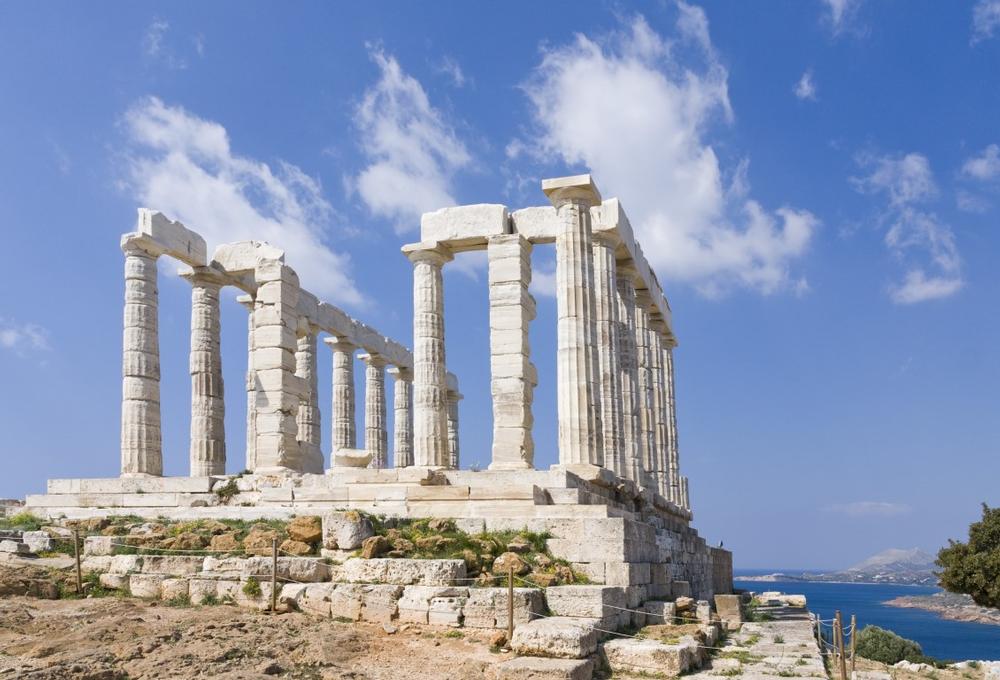
© Ana Tramont/stock.adobe.com
Cape Sounion and the Temple of Poseidon preserves one of the most significant monuments of the Golden Age of Athens, originally constructed around 440 B.C. The temple commemorates a sacred area that is presumed to date back to the Bronze Age, perched 200 feet above the Athenian sea.
It is believed to have been constructed by the same architect as the Hephaisteion and Rhamnous' Temple of Nemesis, constructed as part of Perikles' building project that also produced the Parthenon. An inscription signifies its dedication to the god Poseidon, constructed on the remains of an earlier poros temple that was razed in 490 B.C. by the Persians. Visitors can view the hexastyle temple's remains, which include several of its original six columns. Map
2. Delphi - 2 hours and 15 minutes by Car
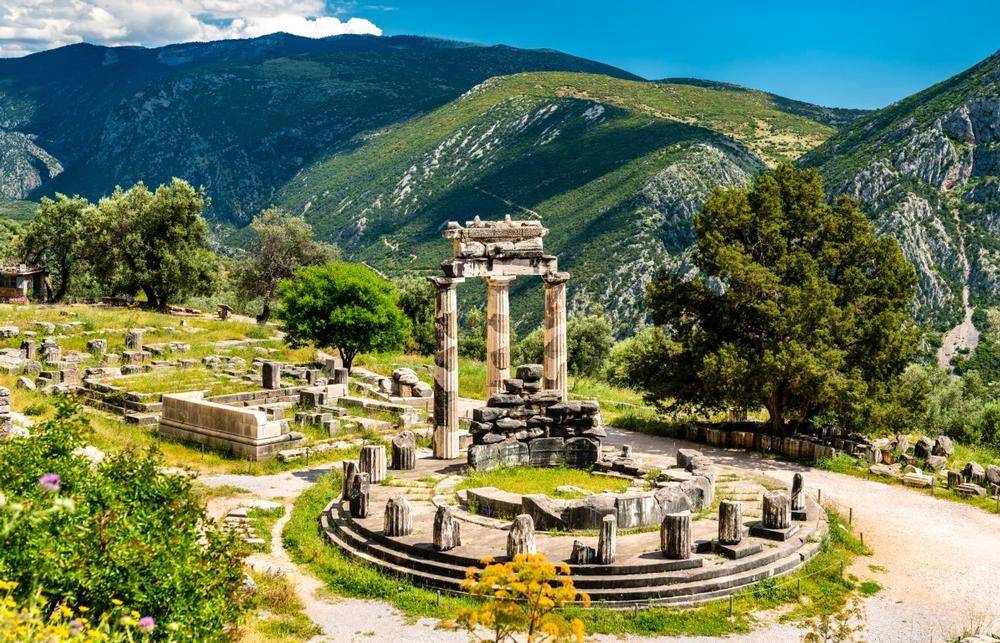
© Leonid Andronov/stock.adobe.com
Delphi, also known as Pytho, is a UNESCO World Heritage Site that preserves one of ancient Greece's most important sanctuaries, formerly known as the seat of the oracle Pythia. The site is ranked as one of the most important tourist destinations preserving the classical period of ancient Greece, set amidst a backdrop of magnificent nearby mountains. Though many of the site's original monuments have been lost to time, visitors can explore the foundations of landmarks such as the Temple of Apollo, which was constructed three times on the same location and was the site where the sitting Pythia priestess would utter the words of the Oracle. The Sacred Way route also traverses the remains of monuments such as the Sanctuary of Apollo, the 6th-century-B.C. Polygonal Wall, the Treasury of the Athenians, and a fourth-century-B.C. theater constructed to host musical contests at the Pythian Games. Archaeological collections are showcased at the Delphi Archaeological Museum, including friezes, stele, and votive offerings. Map
3. Hydra - 2 Hours by Ferry

© SIAATH/stock.adobe.com
Hydra is a lovely island located within Greece's Saronic Islands, located within the Aegean Sea near the Argolic Gulf and the Myrtoan Sea. The island was named after the Greek word for "water," a reference to its ample natural springs. Visitors can explore the island's lovely town of Hydra port, which is home to a charming crescent-shaped harbor that is lined with delightful restaurants, markets, art galleries, and tourist shops. Steep stone streets lead to residential areas, which are home to a number of hostelries. Attractions include the historic Tsamadou and Tombazis mansions, which are used today as a maritime academy and school of fine arts. Six Orthodox monasteries operate on the island, including the 10th-century Profitis Ilias.
Hydra is accessible by ferry from Piraeus Port in Athens. The ferry ride takes between 1 hour and 10 minutes to 2 hours, depending on the service.
4. Mycenae - 1 hour and 30 minutes by car
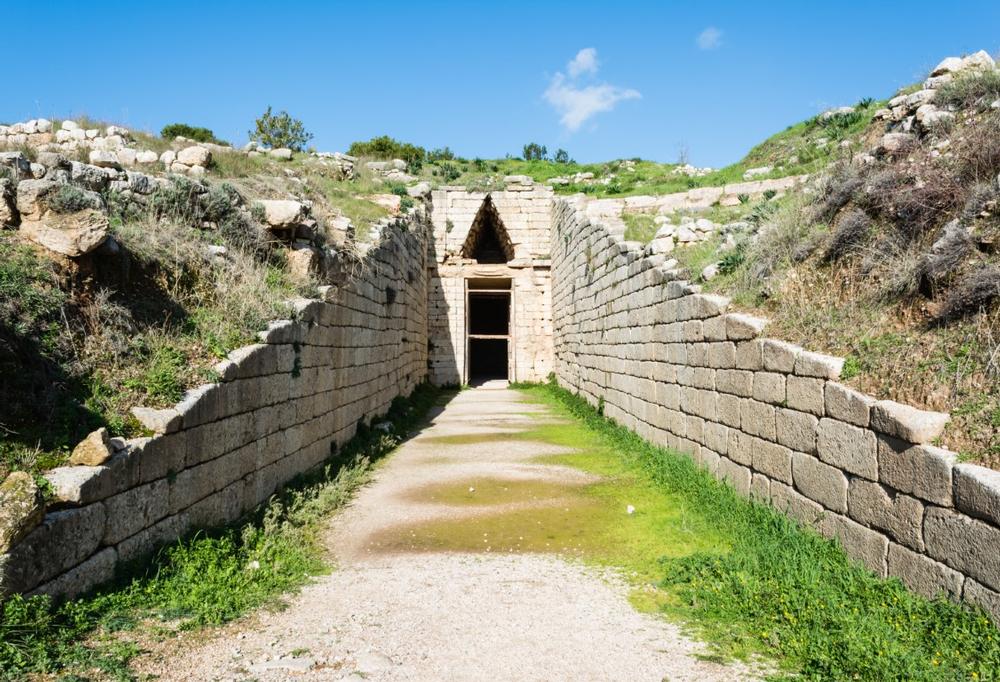
© akarb/stock.adobe.com
Mycenae
is an important archaeological site located approximately seven miles north of the city of Argos, just over an hour southwest of Athens' city center. The archaeological site preserves one of the major city centers of Greek civilization in the second millennium B.C., constructed on a hill rising 900 feet above sea level just inland from the Saronic Gulf. At its peak, the settlement was home to a population of more than 30,000 residents throughout its citadel and lower town area. It is known as the namesake of the Mycenaean civilization and was immortalized in Homer's Iliad for its conquering of Troy by its king, Agamemnon. Today, visitors can view artifacts recovered from the site at the National Archaeological Museum of Athens and can explore the preserved archaeological site directly, which is home to attractions such as the 10-foot Lion Gate and the Treasury of Atreus. Map
Romantic Day Trips from Athens:
5. Corinth - 1 hour by car from Athens
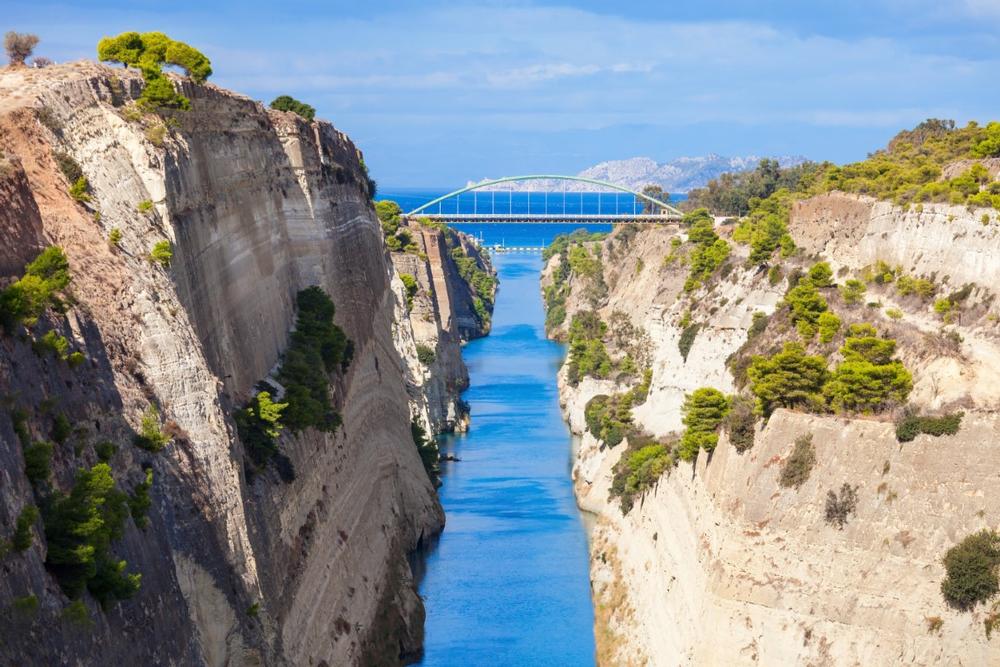
© saiko3p/stock.adobe.com
Corinth is an ancient city located in Greece's Peloponnese region, known as one of Greece's largest and wealthiest city-states throughout the region's Roman era. A modern settlement at Corinth was founded in 1858 following the destruction of an historic settlement that had developed around the site of the ancient city. Beginning in 1896, the ancient city was excavated by archaeologists from the American School in Athens. Today, visitors can view a variety of preserved remains from one of the Classical world's most powerful cities, including the Doric Temple of Apollo, which was constructed around 540 B.C. Other ruins include the Acrocorinth, a hilltop fortification constructed 575 meters above sea level. The historic Corinth Canal, completed in the late 19th century, is one of the city's top tourist attractions today, linking the Aegean and Ionian Seas. Additional archaeological artifacts are on display at the Corinth Archaeological Museum, which showcases Corinthian pottery and other Neolithic finds. Map
6. The Meteora - 4 hours and 15 minutes by car
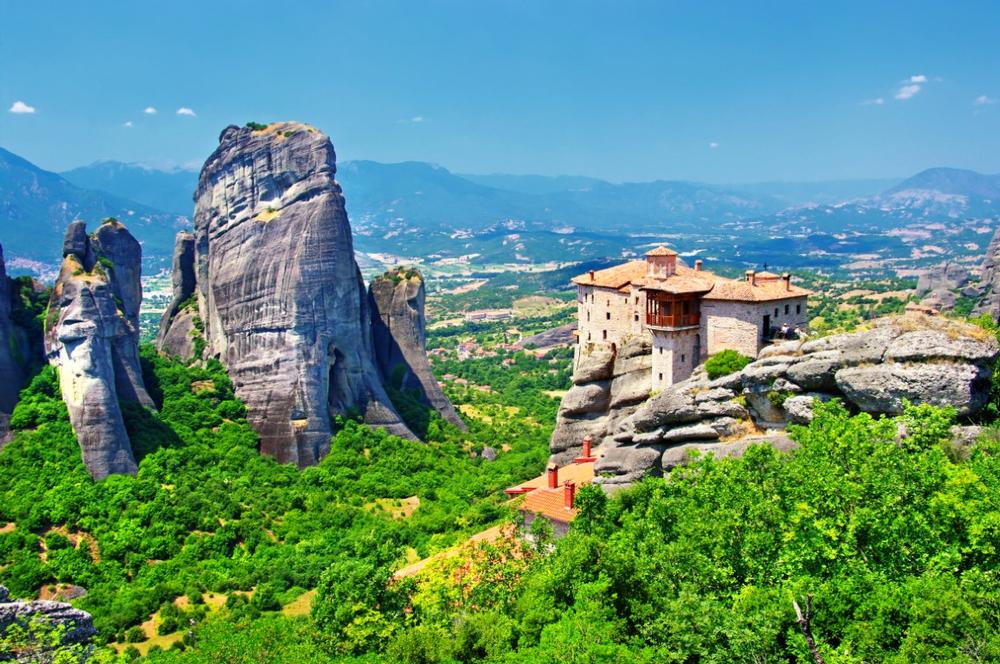
© Freesurf/stock.adobe.com
The Meteora
is a unique rock formation in central Greece that is home to one of the world's largest Eastern Orthodox monastery complexes, designated as a UNESCO World Heritage Site for its cultural significance. The monastery complex is home to six monastery buildings that are constructed on hill-like rounded boulders and massive natural pillars. It has become known as a major pilgrimage site for Christians around the world, creating an atmosphere perfect for meditation and spiritual elevation in conjunction with the splendor of the natural world. Monasteries at the site include the Holy Trinity Monastery, founded in the 15th century by the monk Dometius, which was highlighted in the James Bond feature film For Your Eyes Only, and the Varlam Monastery, which showcases frescoes by iconographer Frangos Katelanos. Map
7. Nafplio - 1 hour and 45 minutes by car from Athens
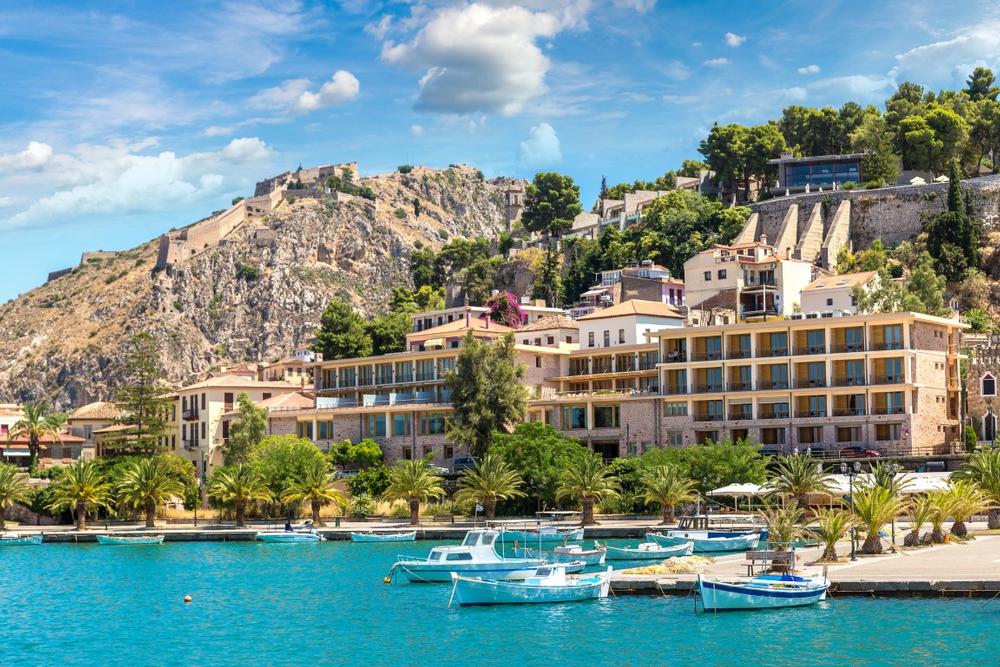
© Sergii Figurnyi/stock.adobe.com
Nafplio is one of Argolis' most beautiful towns, known around the world as one of the most romantic tourist destinations in Greece. The city has connections to ancient Greek mythology, believed to have been founded by Nafplios, the son of the god Poseidon. It showcases ties to the Trojan War in the prehistoric era and served as the original capital of Greece following its declaration of independence in the early 19th century. Today, visitors can view a plethora of preserved Medieval-era castles and monuments, Venetian and Neoclassical buildings, and Ottoman fountains, known for their architectural splendor and photogenic qualities. Visitors can explore the city's Old Town and its narrow cobblestone alleyways, view Mycenaean-era artifacts on display at the Archaeological Museum, or climb a thousand stairs to the top of the Palamidi Castle, which stands more than two hundred meters above sea level. Map
8. Epidaurus - 2 hours by car from Athens
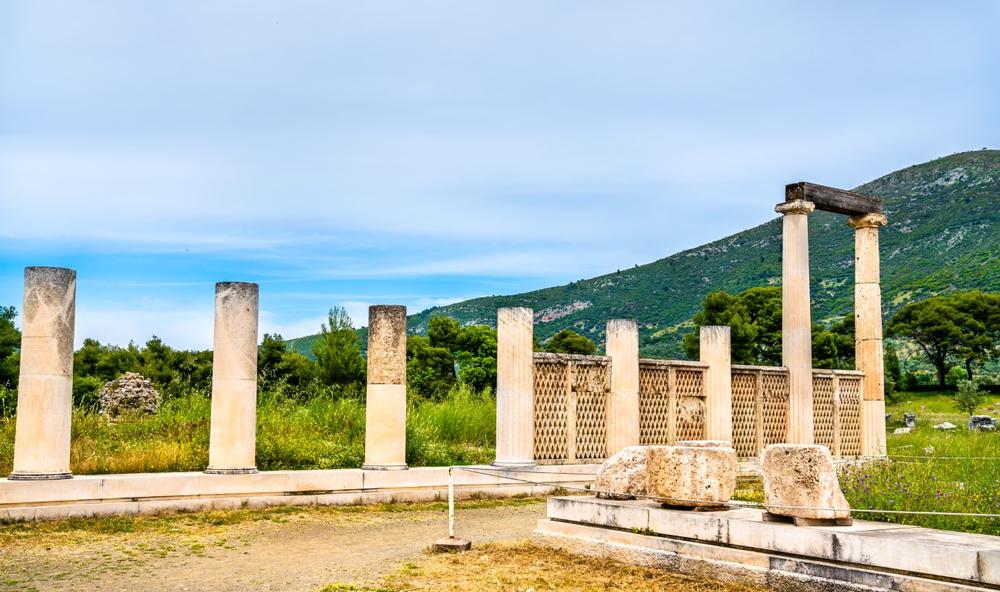
© Leonid Andronov/stock.adobe.com
Epidaurus is one of Greece's most important archaeological sites, located within the country's Argolis region on the northeastern end of Peloponnese. The region is famed for its Ancient Theatre, which was constructed as a religious ceremonial site in the late fourth century B.C. in honor of the Greek god Asclepius. It is famed throughout the world for its unique symmetrical archaeological design and incredible acoustics, hosting performances throughout the year today of ancient Greek dramas. Lush greenery surrounds the classical theater, which offers stunning views of the nearby valley. Guided tours of the region depart daily from Athens and offer opportunities for swimming and scuba diving on the area's lovely beachfront stretches. Map
9. Olympia - 3 hours and 30 minutes by car from Athens
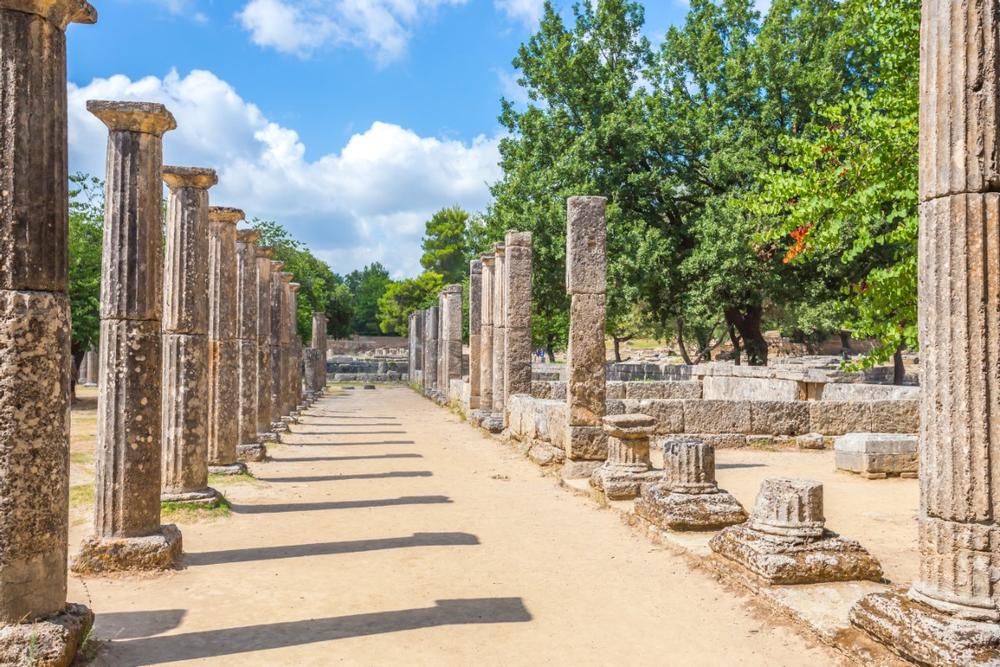
© elgreko/stock.adobe.com
Olympia is best known as the birthplace of the ancient Greek Olympic Games in the eighth century B.C., home to extensive ruins of athletic training areas and stadiums. The site, which is located on the western end of the Peloponnese peninsula, is home today to the Archaeological Museum of Olympia, which exhibits artifacts such as a statue of the Greek god Hermes that is attributed to the sculptor Praxiteles. Visitors can explore the facility's Ancient Stadium, which showcases a spectacular arch and a 200-meter racetrack. Nearby, the Temples of Zeus and Hera are among the oldest preserved temples of ancient Greece. Each modern Olympic year, the Olympic flame is still lit at the altar of the Temple of Hera prior to each Olympic torch relay. Map
10. Aegina - 1 Hour by Ferry
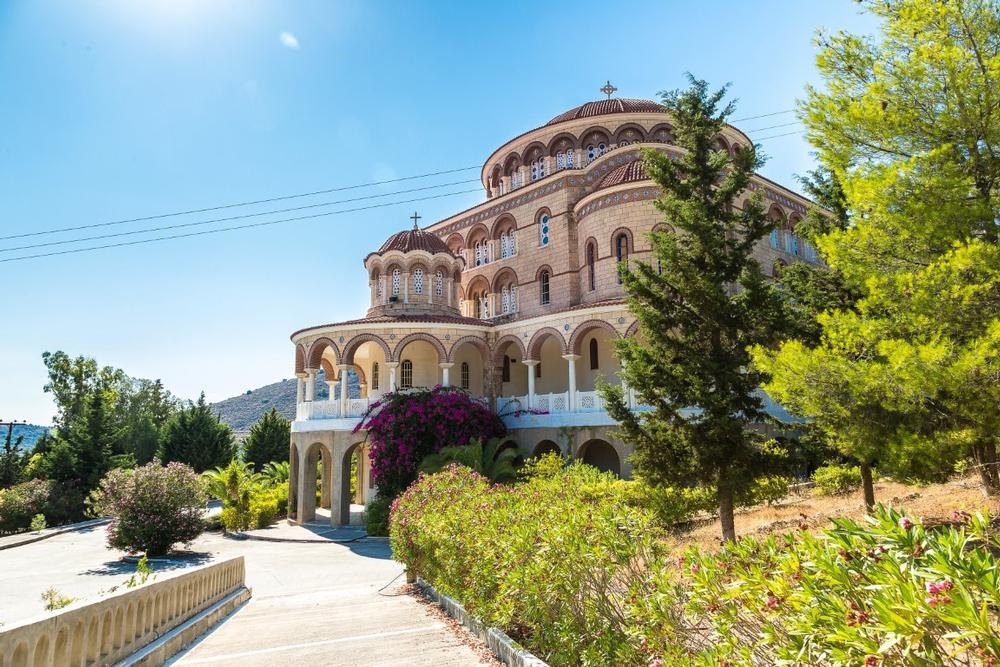
© Sergii Figurnyi/stock.adobe.com
Aegina is a lovely island within Greece's Saronic Islands, located approximately half an hour from Athens within the Saronic Gulf. The island is named in honor of Aegina, the mother of Greek hero Aeacus, who reigned as king of the island at one point during its ancient history. Today, it is known for its preserved ancient sites, including the Temple of Athena Aphaia, a spectacular Doric temple that sits in the island's center. Other important landmarks include the Byzantine Temple of Zeus Hellanios, constructed in the 13th century, and the Monastery of Agios Nectarios, which honors the saint Nectarios of Aegina. Charming villages and tourist resorts such as Kypseli, Agia Marina, and Souvala are home to delightful cafes, restaurants, and traditional taverns, while secluded beaches offer pristine coastline access. Map
Aegina is accessible by ferry from Piraeus Port in Athens. The ferry ride takes between 40 minutes to 1 hour and 10 minutes, depending on the service.
📔 I get asked this a lot so I decided to include it:
-
What makes Greece’s capital city historically significant?
- Greece's capital city is one of the world's most historic cities, known as the cultural and political center of Ancient Greece's empire thousands of years ago.
-
What ancient landmarks can visitors explore in Greece?
- Many of the region's top architectural and archaeological landmarks are preserved in remarkable condition for their age.
-
What are some of Greece’s most famous ancient sites?
- Visitors can explore Mycenae, connected to the conquering of Troy, and Olympia, the site of the first ancient Olympic Games.
Best Time to Plan a Day Trip from Athens, Greece
- April to June – Ideal for mild weather, blooming landscapes, and fewer crowds.
- September to October – Pleasant temperatures and great for coastal excursions or historical sites.
- July & August – Hot but perfect for island hopping and beach escapes nearby.
- November – Cooler weather with fewer tourists, great for exploring ancient ruins.
- December to March – Off-season with cooler temps, ideal for quiet cultural and scenic visits.
Map:
Plan Your Trip












